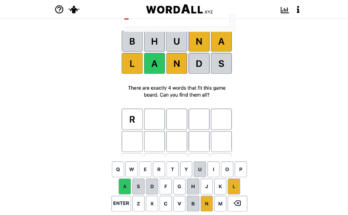This article contains spoilers for some Metroid lore, specifically from ‘Metroid Fusion,’ along with some wild theorizing about what’s going on in ‘Metroid Dread.’
Metroid Dread can be terrifying. At times, Samus Aran, Nintendo’s all-powerful heroine, is reduced to cowering in a corner, praying that the robot who’s hunting her moves on. It’s a strange tone for the fifth mainline game from one of Nintendo’s oldest series, which arrives on the Switch this October. But it’s a concept that Yoshio Sakamoto, who has guided the Metroid series since the early days and is producing Dread, has wanted to realize for over 15 years.
Sakamoto came up with the idea for Dread in the mid 2000s, following the release of Metroid Fusion, the last “proper” Metroid game. Various leaks (and even an in-game reference) brought the game to the public eye, but it never came to fruition. At a press event after Tuesday’s Nintendo Direct presentation, Sakamoto said this was due to what were then console-related limitations: “The hardware wasn’t there, the technological concepts weren’t working with our vision. So we had to put it on hold. And then sometime later, we started again, but then we stopped again, for pretty much the same reasons,” Sakamoto explained through a translator.
In fact, when Sakamoto first met with MercurySteam, the Spanish studio that’s developing the new Switch title, he went in with the hope “that they’d be able to realize the concepts I had for Metroid Dread.” Instead, MercurySteam went on to develop 2017’s Metroid: Samus Returns, an expanded remake of Metroid II, with Sakamoto acting as producer. After seeing what the team achieved with Samus Returns, Sakamoto decided he could work together with MercurySteam “towards a singular concept and realize this goal that I had in mind for Metroid Dread.”
The demo at Nintendo’s event was a 20-minute live playthrough of one of the game’s earlier segments. It showcased a number of elements first introduced in Samus Returns. Melee counter-attacks are back, as are free aiming and Aeion abilities that rely on a power gauge. New for Dread is a slide move that’s in Samus’ arsenal from the get-go, and an unlockable “Spider Magnet” ability for holding onto certain walls.

Nintendo
We’ll get into the story later, but Dread takes place after the events of Fusion and has Samus — surprise! — investigating a labyrinthine underground complex, with her ship up on the planet’s surface. Despite the tweaks each Metroid title has brought to the formula, the majority of gameplay is going to be what you expect: exploring, blasting, finding hidden areas, noting places you’ll need to return to once you have the requisite power-up and bumping up against a lot of dead ends.
While gameplay takes place on a flat plane, everything is rendered in 3D. I do miss the old pixel art, but the “2.5D” presentation lends a level of depth, fluidity and detail that just wouldn’t be practical without the modern rendering style. It’s the same basic presentation that debuted with Samus Returns, albeit with a much higher level, increased scene complexity and a smoother framerate. (One thing that unfortunately can’t be improved upon is Samus Returns’ excellent use of the 3DS’ unique stereoscopic display.)
For the next few minutes of Nintendo’s playthrough, Samus fought monsters and solved some basic environmental puzzles by redirecting fuel around the complex in order to create a path forward. Then came a pixelated doorway, and the “dread” began. As soon as Samus walks into one of these areas, she’s stalked by an “Extraplanetary Multiform Mobile Identifier” (EMMI, for short) until leaving. These robots, which so far we’ve seen use noise and sight to hunt, are the main antagonists of Dread, and they’re hellbent on capturing Samus.



